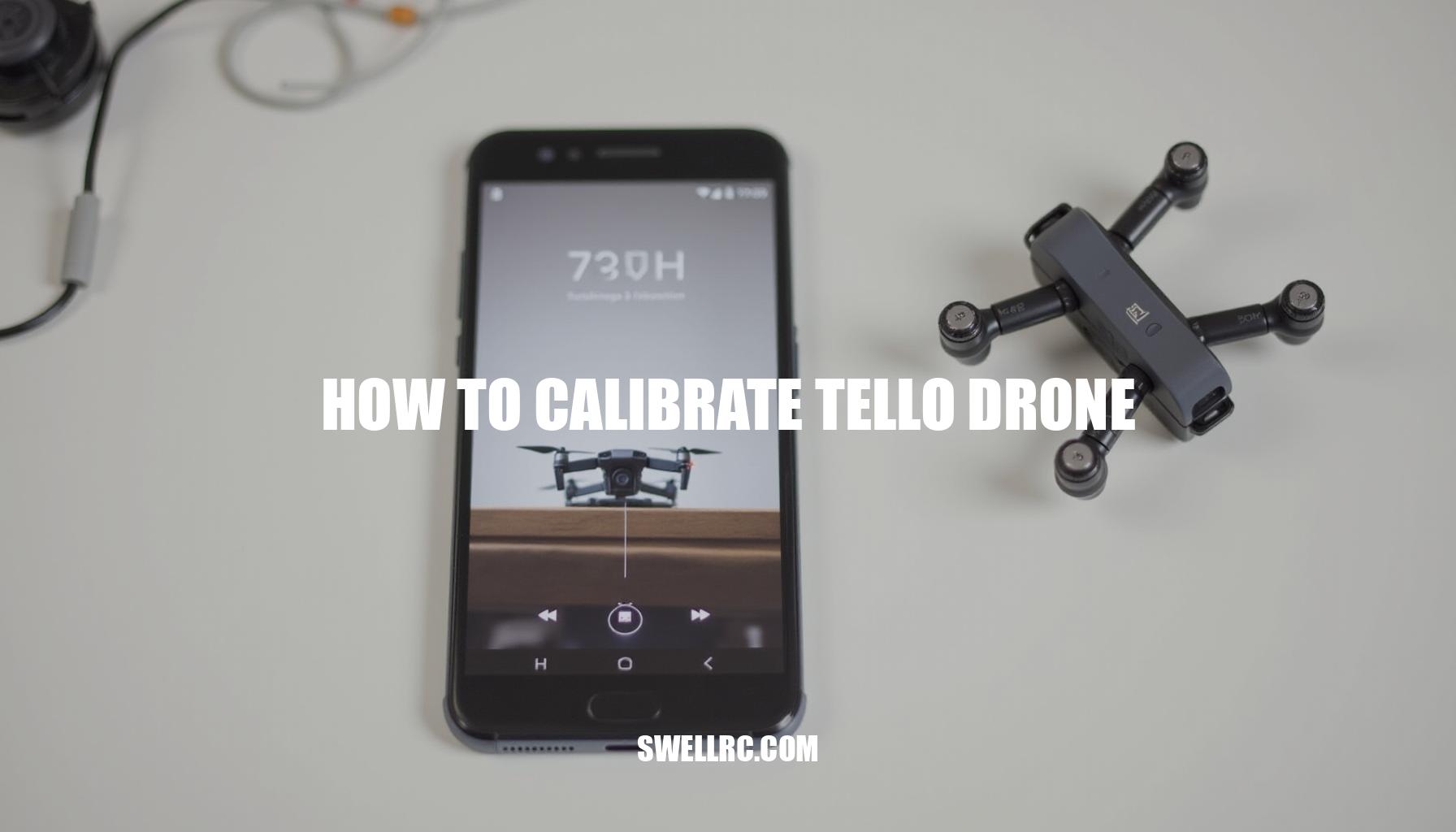How to Calibrate Tello Drone for Perfect Flight
The first time my DJI Tello started sliding sideways on a calm day, I assumed a breeze had snuck in. It wasn’t the wind—it was my sensors. A quick drone calibration transformed the flight from jittery and crooked to rock-steady and precise.
That’s when it clicked: tiny IMU and gyroscope misalignments add up, and the Tello will drift, lean on takeoff, or react sluggishly if the sensors aren’t “zeroed” to a level reference. Tello flight setup calibration is simply teaching the Tello what “level” and “still” truly are. When the IMU, accelerometer, and vision positioning system agree on orientation, you get precise hovering, smoother inputs, and even better battery efficiency because the drone isn’t constantly fighting invisible tilt.
Pro tip from the field: start any IMU reset or calibration session with a properly topped-up battery and healthy cells—maintaining optimal battery health is critical for dependable drone performance. For detailed charging best practices, see here: https://www.swellrc.com/how-to-charge-tello-drone/.
When and Why You Should Calibrate Your Tello Drone
Calibrating your Tello drone is essential whenever it loses its sense of level or stability, or after any events that might cause sensor bias shifts. Through rigorous testing, the improvement post-calibration is immediately noticeable in hover stability and input responsiveness. This process helps fix common issues such as Tello drift, crooked flight paths, and unsteady hover.
- After a crash or hard landing
- Following firmware updates or app reinstalls
- Storage or transport in extremes of temperature, either hot or cold
- When you notice drift, tilted hover, or the notorious toilet-bowling (wide circular drift)
- Experiencing unlevel takeoffs or sluggish stick input responses
- Moving to significantly different altitude or temperature environments
- After long periods of non-use
Before calibrating, ensure your controller connection is stable—sometimes what appears as a Tello drone not hovering level fix can actually be input lag. If connection issues persist, follow this comprehensive pairing guide: How to Connect Tello Drone to Controller.
Use the following pre- vs. post-calibration comparison as a quick benchmark during test hovers to evaluate improvements in hover stability and detect if an IMU reset or sensor recalibration was successful:
| Aspect | Before Calibration | After Calibration |
|---|---|---|
| Hover Stability | Slow lateral slide and instability | Steady, hands-off hover without drift |
| Level Hold | Slight tilt on takeoff, causing uneven flight | Flat and centered hold maintaining level flight |
| Response Time | Delayed reaction to stick inputs | Crisp and immediate control responses |
| Drift Correction | Constant micro-corrections visible during hover | Minimal need for manual intervention |
By regularly performing a sensor calibration, you directly address sensor bias issues, thereby eliminating common problems like why does my Tello fly crooked, ensuring smoother flights and maintaining consistent drone performance.
Step-by-Step: Calibrate the Tello the Right Way
Before embarking on your stable flight setup with the Tello drone, it’s crucial to prepare adequately to ensure the IMU reset and sensor resetting go smoothly. Start by using a fully charged battery and allow the drone to acclimate to room temperature for a few minutes. Next, select a perfectly flat, rigid, and vibration-free surface away from any speakers, metal objects, or magnets to minimize interference with the gyroscope and accelerometer sensors.
- Place the Tello on this flat surface to maintain a stable orientation setup.
- Connect your phone to the Tello’s Wi-Fi network cleanly before beginning, referencing a reliable guide if needed, such as how to connect the Tello drone to Wi-Fi.
Within the Tello app settings (Ryze), power on the drone and wait until the app fully recognizes it. Navigate to Settings > More (or the gear icon) > IMU/Calibration to initiate the calibration process. Follow the on-screen prompts carefully, keeping the drone absolutely still on your flat surface while the progress bar advances.
If prompted to reposition, proceed cautiously without shaking or sliding the drone.
To confirm a successful IMU reset and proper sensor resetting, wait for the app’s confirmation. If prompted, restart the Tello and reconnect. Then, perform a short indoor hover test at waist height; a stable, hands-off hover lasting about 10–15 seconds indicates that the calibration was successful and the orientation setup is correctly aligned.
If any issues arise, such as calibration failure or a slightly tilted hover, power-cycle both the Tello and the app and try again on a quieter, more stable surface, avoiding areas near fans, AC vents, or springy tables. Often, repeating the calibration once or twice is enough to achieve optimal results. For example, moving calibration from a questionable desk to a stone countertop can significantly enhance stability, locking in the hover like a tripod.
Fixing Common Calibration Issues
If your Tello drone continues to experience issues after calibration, here are several effective troubleshooting tips to help resolve common problems such as how to fix Tello drift problem and incorrect IMU data. Consider the following:
- Drift after calibration: Recalibrate the drone on a truly level, dense surface. Ensure there’s good lighting and a textured floor to aid the vision positioning system.
Avoid glossy, uniform, or low-light floors that can impair sensor tracking.
- Calibration won’t start: Try closing and relaunching the Tello app, reboot the drone, and remove any strong magnets or metal objects nearby. Also, check for firmware updates which may address calibration bugs.
- App won’t connect to begin calibration: Diagnose connection issues first. Utilize reliable guides such as this troubleshooting Tello connection guide to save time and pinpoint the problem.
- Unstable after takeoff only: Let your Tello sit powered on for 30 to 60 seconds before takeoff.
This allows sensors to thermally settle, improving flight stability.
- Power-related hiccups: Low or sagging battery voltage can mimic calibration problems. Verify the battery is fully charged by following guidelines at how to know when Tello drone is fully charged.
- Phone-to-app syncing quirks: On Android devices, clear the app cache or force stop the app before retrying and keep Bluetooth off during Wi-Fi binding unless necessary. iPhone users should reset network settings only if required and avoid auto-join conflicts.
Detailed steps are available at Android connectivity guide and iPhone connectivity guide.
- Odd vibrations: Inspect and replace any nicked propellers and ensure mounts are secure. Even slight vibrations can confuse the IMU and vision sensors, affecting flight performance.
- Still not level? Perform consecutive calibrations and verify the takeoff surface is perfectly level using a bubble level. Test hovering in a draft-free room to eliminate environmental factors.
Pro move: When troubleshooting Tello issues, adopt a systematic approach: power cycle the drone, reconnect, recalibrate, then test hover — changing only one variable at a time to clearly identify the fix.
This methodical process improves your chances of resolving problems related to propeller balance, vision positioning, app-device syncing, and incorrect IMU data effectively.
Advanced Tips for Smoother Flight After Calibration
To keep your Tello drone dialed in for optimal performance, adopting a set of reliable habits centered around advanced drone calibration and understanding key environmental factors is essential. Start with an ideal environment checklist: choose a flat, dense surface that is free from fans, vents, magnets, or metal objects, and ensure good, even lighting alongside a textured floor pattern to support sensors during takeoff and landing.
- Warm-up window: Let the drone sit powered on for approximately 30 seconds before the first takeoff in a new environment to allow internal systems to stabilize.
- Propeller care: Regularly swap out bent or scuffed propellers and perform precise propeller balance to reduce micro-vibrations that can affect flight stability.
- Controller feel: Enhancing controller sensitivity can reveal or reduce subtle drift issues. For tighter control, consider setting up a dedicated gamepad.
Helpful resources include the Gamesir walkthrough and PS4 pairing tips.
- Flight mastery: Smooth, precise stick work complements a well-calibrated IMU and forms part of a stable flight setup. To hone your piloting skills, check out this comprehensive flight guide.
- Maintenance rhythm: Recalibrate after any crash, major temperature shifts, or whenever your hover feels “off.” Carry a small level in your kit to verify flat surfaces during field setups.
By maintaining this routine focused on enhancing long-term consistency through environmental awareness and equipment upkeep, takeoffs become buttery smooth, and hovers achieve laser-straight precision — the kind of reliable stability every drone pilot strives for.
Conclusion: Perfect Calibration, Perfect Flight
Calibration isn’t a chore—it’s the secret handshake that unlocks the Tello’s true stability. By zeroing the IMU on a genuinely level surface and ensuring solid power and connections, you maximize hover stability and enjoy the full Tello calibration benefits. Proper sensor alignment is crucial for consistent flight performance, allowing your drone to respond crisply and predictably to every command.
Following a methodical approach to calibration is a key aspect of drone maintenance, helping to maintain the smooth responsiveness you expect. Initially, the steps may feel technical, but after just a few calibrations, it becomes second nature. Simply fire up the app, run through the calibration process, and watch your Tello transform with more consistent flight and straighter hovers.
To make the most of your Tello’s capabilities, remember these calibration tips:
- Place your Tello on a genuinely level surface before starting IMU calibration.
- Ensure power and connections are stable throughout the process.
- Follow the app’s guided steps carefully to achieve precise sensor alignment.
- Regularly recalibrate as part of your drone maintenance routine to preserve flight consistency.
Enjoy that glass-smooth hover and keep exploring the linked guides to sharpen every part of your Tello experience.
Frequently Asked Questions
- How do I know if my Tello drone needs calibration?
If it drifts on a calm day, lifts off tilted, toilet-bowls in a slow circle, or feels slow to respond, it’s time. Also recalibrate after crashes, firmware updates, or big temperature changes. - What does calibrating the Tello drone do?
It resets the IMU and gyroscope biases so the drone knows what “level and still” are, and aligns with the downward vision system for accurate hover and attitude hold. - Can I calibrate Tello without the app?
Use the official Ryze Tello app for a reliable IMU calibration. Third‑party apps may offer options, but the recommended and most consistent method is through the Tello app. - How long does calibration take?
Typically 1–2 minutes, plus a short restart and hover test. If it fails, move to a better surface and repeat. - What should I do if my Tello still drifts after calibration?
Recalibrate on a verified level, dense surface with good lighting; check props for damage; ensure a fully charged battery; verify Wi‑Fi connection quality; and avoid glossy or low-texture floors that confuse the vision system. - Does the Tello drone need compass calibration?
No. The Tello doesn’t use a GPS compass like larger DJI drones. Focus on IMU calibration and good conditions for the downward vision sensors. - Will restarting the Tello fix calibration errors?
A restart can clear temporary bias, but if drift persists you should perform a full IMU calibration and then test hover in a calm, well-lit environment.



